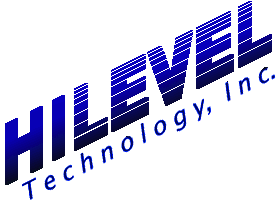

#L12
Q:
How can I best organize my small production
runs without an IC handler?
The ETS for Manual Test Applications - The HILEVEL Test Box
|
While the application excludes automatic handling equipment, there nevertheless is a striking resemblance between tester applications employing people for the handling of devices and applications that utilize robots for moving parts on the basis of the outcome of the test. Indeed, the screens pertaining to the TestBox are a subset of the screens that cover IC Handler utilization. Before either of the aforementioned screens can be utilized,
we must ‘build’ the test using AutoTest Setup. There we generate
our test by picking commands from a menu. Some of these commands, such
as DUT CONTINUITY and FUNCTIONAL are self-contained provided you associate
the proper SET file and TRN (Vector) file with the command. Other commands
may require further association. For instance, DC PMU tests such VOH test
must be associated with a PMU test defined for the particular set file.
This test will be attached to the command using the Attach button.
|
Upon entering the TestBox window, we load all vector files into the tester memory. Sub-tests using the same vector files will share the vector space in the ETS memory. The obvious benefit of this mechanism is that we don’t need to download vector files during execution of the test, resulting in extremely fast deployment of multiple vector files. You next press Start and you are ready to run the test by pressing the button on the TestBox. Each sub-test will indicate pass/fail, and the final outcome of the test will be celebrated by a big green smiling face or bemoaned by a big red sad face. The time (with millisecond resolution and the accuracy of a crystal oscillator) taken to execute each sub-test is indicated adjacent to each check-mark. Branching is also supported. For instance, if a test fails, it may take
an alternate path to further ascertain the type of failure. Or, in the
case of failing continuity, you may skip the rest of the tests and go straight
to END; there is typically no need to run the rest of the tests if the
part is not connected. Also See: QL12.zip is a zipped Word file of this Q'nApp. Click your browser's Back button to return to the Q'nApps index. |